What Is A Token Sale (ICO) And How Do You Successfully Run One?
Rubic’s Cross-Chain Tools enable your platform to act as a gateway to buy your project’s token. An easy-to-install Widget and a battle-tested SDK let your users swap from any of 15,500+ tokens across 70+ blockchains to your custom token! Let us explain the value of Rubic’’s Tools for token owners in detail.

Creating a token is one thing, but promoting and growing it is another. One of the key aspects of succeeding in a token launch is providing an easy and comfortable method to purchase your token.
What Are Token Sales?
Token sales, commonly known as Initial Coin Offerings (ICOs) or Token Generation Events (TGEs), involve the issuance and sale of cryptographic tokens to fund a project or startup. These tokens often represent a stake or utility within a decentralized ecosystem and can be traded on various blockchain platforms.
How Do Token Sales Work?
While coming up with the project’s strategy, you should think deeply about token sale distribution. Someone could buy your token with the most popular crypto such as ETH or BTC, others would seek fiat On-Ramp solutions to purchase it, and there are always those who would like to swap their stablecoins for your cryptocurrency. In that case, where would they go? Most probably CEXs, and hopefully DEXs! Not only must you list your token on as many exchanges as possible, but users also need to leave your website and travel around the web looking for better rates, safer solutions, and faster transactions amongst numerous alternatives.
Wouldn’t it be better to create a one-stop solution for users to become aware of your token, become interested in it, and purchase it directly from your website? Fortunately, there is a very solid solution to get it done.
All token owners can use Rubic’s Cross-Chain services safely and free of charge to conduct simple Cross-Chain transactions, from almost any asset to the project’s token, directly on the project’s website.
Rubic’s Cross-Chain Tools are a set of prebuilt UI components that enable token owners to install our aggregator or DEXs and bridges right on their page, while gaining interoperability between multiple blockchains. No more need for your users to leave your website and seek other bridges or exchanges!
Why Do Companies Sell Tokens?
Companies engage in token sales as a means of fundraising for their projects. By selling tokens, these companies can secure capital to develop and launch their blockchain-based platforms, applications, or services. Token sales also serve as a method to distribute ownership and utility within the project’s ecosystem.
How Do You Plan A Token Sale?
Planning a token sale involves several key steps:
- Whitepaper Creation: Outline the project’s goals, technology, team, and tokenomics in a comprehensive whitepaper.
- Legal Compliance: Ensure compliance with relevant regulations and seek legal advice to structure the token sale within the legal framework.
- Smart Contract Development: Create a secure and audited smart contract to govern the token sale, specifying details such as token issuance, distribution, and any additional features.
- Marketing and Promotion: Develop a marketing strategy to create awareness about the token sale, targeting potential investors and contributors.
- Token Sale Platform: Choose a platform or method for conducting the token sale, such as a dedicated website, a token sale platform, or a decentralized fundraising protocol.
How Does Token Distribution Work?
Token distribution typically follows the completion of a successful token sale. The process involves allocating tokens to contributors based on their investments. Distribution may be immediate or occur in phases, and it’s crucial to clearly communicate the distribution plan to participants.
Risks and Challenges of Token Sales
- Regulatory Uncertainty: Adherence to evolving regulatory requirements can be challenging and may impact the feasibility of token sales.
- Security Concerns: Smart contract vulnerabilities and security breaches pose risks to both the token sale process and the project’s overall success.
- Market Conditions: Fluctuations in cryptocurrency markets can affect the value of tokens, influencing investor sentiment.
Running a Successful Token Sale
Running a successful token sale requires transparency, effective communication, and a well-executed strategy. Providing clear information, fostering community engagement, and addressing potential concerns contribute to building trust with the investor community. Additionally, collaborating with experienced advisors and professionals can enhance the overall success of the token sale.
Let’s Explore the Options
Rubic has 2 solutions to integrate a cross-chain DEX right into your website: The Widget and SDK. There are some differences in the process of integration and customization, but some things are universal. You may integrate either the SDK or Widget, and you’ll get features of the Rubic platform itself, such as:
- Cross-Chain Swaps of 15,500+ tokens across 70+ blockchains
- Swaps averaging 90 seconds
- Smart Routing: The best deal across 220+ DEXs & bridges
- 24/7 Support
- On-chain and cross-chain swaps in 1 click
- Auto-refund function
- Extra Revenue & Customizable Fees
Now, let’s clarify the advantages that our solutions contain.
The Widget: An Easy and Fast Integration
Integrating the Rubic Widget costs you just a few clicks. To make our technology easy to integrate, Rubic created a Widget Configurator. This feature allows you to:
- Customize the dark/light mode theme and choose a background color, so you can match it with the look of your website.
- Input UI translations to match your customer’s preferred language.
- Set up an initial/destination token and blockchain, then choose the default amount of tokens to swap.
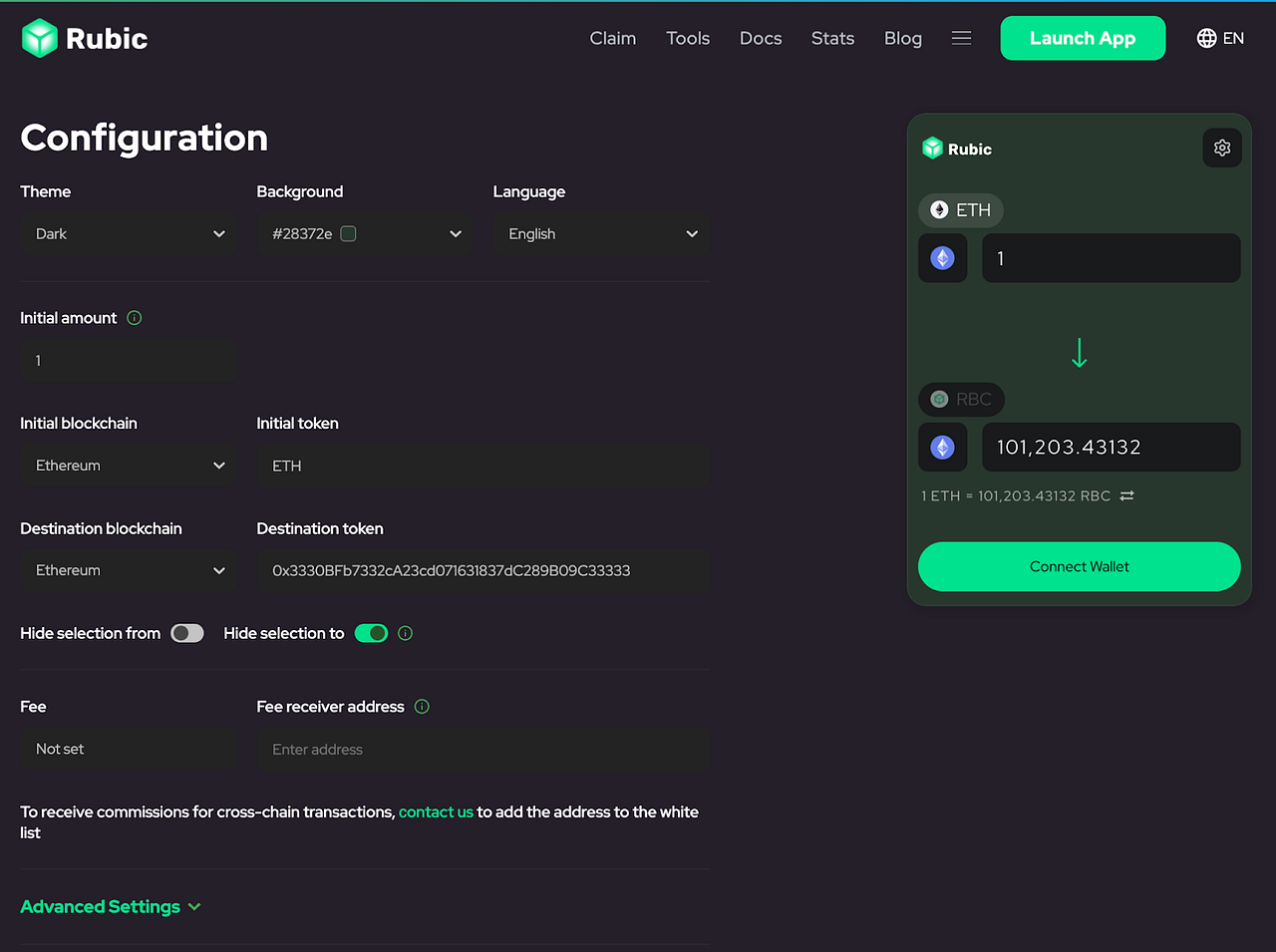
Rubic’s Widget, with its minimalistic and classic design, will be a great fit for any project’s existing interface. The process of integration is simple and usually takes no more than 10 minutes.
Case Studies
The Rubic Widget has been integrated by numerous crypto projects such as:
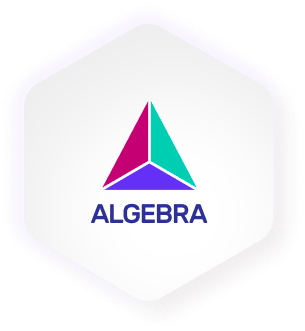
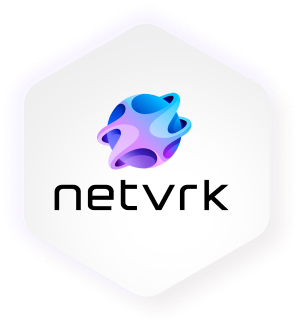
SDK: Match Your UX/UI
SDK integrations may take more time, but it’s definitely worth it! You can make it fit perfectly into your website’s style, as Rubic’s SDK gives you full control over your website UI. You can fully customize Rubic’s SDK to your platform so that no one will ever notice it comes from somewhere else.
Let’s look at one of Rubic’s latest SDK integrators, Novation. They’ve implemented the SDK to enable purchasing their $VAULT token directly on their website, and it looks very impressive!
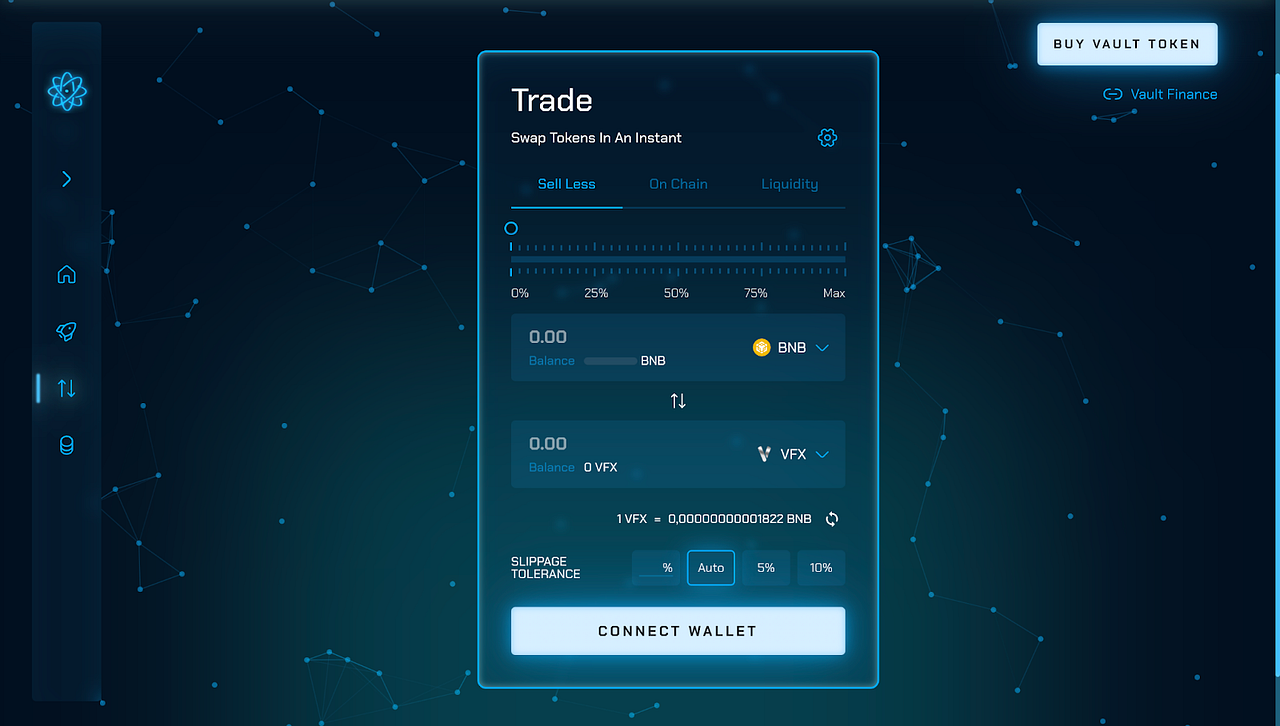
Once your token and platform go live, Rubic’s SDK will be your driving force. It will let your users buy your token from 70+ blockchains with any of 15,500 assets right on your frontend. Integration consists of 4 major steps:
Our SDK supports installation from several sources — CDN or NPM.
After you have installed the SDK, you need to then set it up.
Swaps in our SDK are separated into On-Chain & Cross-Chain trades.
Swaps are easy to execute, and their parameters can be specified.
The simplest version of the SDK takes up to 1 day to integrate, but if you choose to go for a complete and customized tool to trade your token, it might take several weeks to implement the integration. You can find the advanced documentation on Rubic’s GitHub.
If it seems a bit complicated, don’t you worry — technical support is ready to assist you 24/7 — before, during, and after integration.
The SDK can be used in any frontend application, regardless of the framework used (React, Angular, Vue, etc.), or in a JavaScript application that does not use the framework at all. You can also use the SDK to calculate the trade on the NodeJS server; however, it will be impossible to conduct a transaction on the server on behalf of the user. In the future, we’re planning to develop a module for a more complete SDK integration on the server, as well as specialized modules for specific frontend frameworks for even faster SDK integrations.
As a white label solution, Rubic’s SDK can be easily implemented into your project’s environment, by letting you write your own logic in the code on how users will go through each step when making a swap. The UX is clear and friendly to the extent that any crypto novice will understand how to make a cross-chain or on-chain swap.
Rubic’s SDK is already the choice of multiple projects who also sell their tokens, such as:
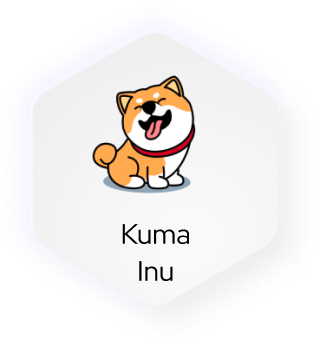
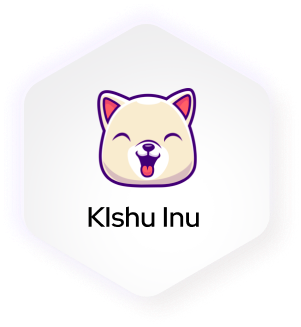
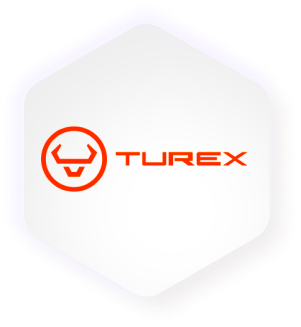
Rubic Tools’ Benefits Overview
Over 130 crypto projects have already become interoperable with Rubic’s Cross-Chain tools.
Regardless of the choice, Rubic’s Cross-Chain Tools provide token owners with an innovative opportunity to make their tokens easy to purchase directly from the project’s website.
But that’s not all:
- Customizable Fees and Extra Revenue
Up to 50% of the fees coming from trades via Rubic’s SDK/widget go straight to your revenue. You may also add more trading fees that will be charged by your platform via Rubic’s widget/SDK.
- Trading Volume Boost
With Rubic’s widget or SDK, users will be able to buy their desired token right on your website, regardless of the blockchain they use. Thus, you will keep users on your platform without letting them leave for a DEX or a bridge, and increase your trading volume.
- Safety is Our Priority
Security is ensured via automated monitoring, and transactions to a corrupted service are switched off immediately. Rubic’s contracts are subject to permanent monitoring by auditors, dedicated security engineers, and bug bounty participants.
- Saves Time & Money
You save lots of developer hours not having to create the tools by yourself, and can spend just 10 minutes to integrate the Widget, or 1 day for the simplest SDK installation instead.
- Dedicated Dev Support
You can contact our support team 24/7.
- Ever-lasting Liquidity
Rubic’s tools aggregate liquidity via several providers, so users can still swap even if one of the integrated DEXs or bridges runs out of liquidity or stops operating.
Explore more advantages of Rubic’s Cross Chain Tools at https://tools.rubic.exchange/tokenOwners.
Apply for your token to become Cross-chain!
Listing on the Rubic Protocol is needed to include your token in the list of available assets for On-Chain and Cross-Chain trading.
To apply for a listing, you’ll need to send us:
- The token address
- The project’s website URL
- The token logo (128×128 PNG or SVG logo)
- Contact Information: Email address and Telegram account
You can send this information directly to one of Rubic’s Business Developers.
The Rubic team thoroughly examines every project to prevent unreliable projects from joining the ecosystem. As soon as the listing is complete, you’ll be able to start your journey in Cross-Chain along with getting extra benefits from the Rubic Protocol:
- Trading volume and revenue boost
- Easy implementation
- Intuitive UI and customizable UX
- One-click Cross-Chain Swaps of 15,500+ tokens across 70+ blockchains
- Average swap in 90 seconds
- Smart Routing: The best deals across 220+ DEXs & bridges
- 24/7 Support
- Auto-refund function
Rubic offers the Cross-Chain toolkit that will allow your project to grow into an omnichain ecosystem in a matter of 1 hour, depending on the complexity of your integration. By integrating Rubic, you will spend minimum time and effort, while receiving one of the best cross-chain tools available today.
Rubic’s social media channels:
Twitter | TikTok | Telegram | Medium
Discord | YouTube | Facebook | Reddit
About Rubic
Rubic aggregates 70+ blockchains and testnets, while it enables swaps of 15,500+ assets with the best rates, highest liquidity, and transaction speeds — in one click, thanks to the integration of 220+ DEXs and bridges.
Users no longer have to roam across Web3 to compare rates and liquidity; they can make cross-chain and on-chain swaps of any available token to any other one on https://app.rubic.exchange/. On top of that, Rubic’s app along with our cross-chain widget provide fiat on-ramp services, making crypto easy to access and buy.
We also provide tools for dApps to enable cross-chain swaps. Rubic’s functionality can be implemented by any crypto project willing to become interoperable, with an easy-to-install widget and fully customizable SDK.

